#empress cixi
Photo
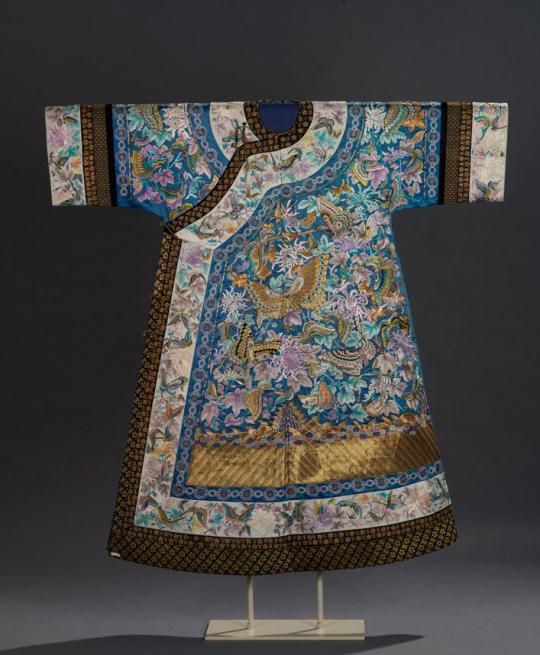
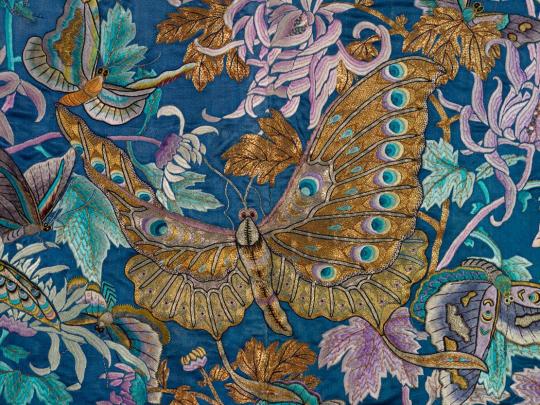
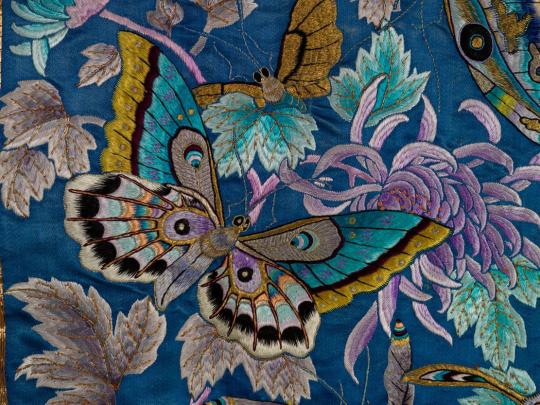
Coat, said to have belonged to Empress Dowager Cixi
c.1890-1900 (Qing Dynasty)
China
Royal Ontario Museum (Object number: 919.6.128)
#coat#fashion history#historical fashion#cixi#chinese fashion#non western fashion#1890s#1900s#blue#embroidery#19th century#20th century#silk#satin#empress cixi#empress dowager cixi#royal ontario museum#popular
2K notes
·
View notes
Text

Empress Dowager Cixi's Private Residence in Beijing, China
British vintage postcard, mailed in 1917 to Linz, Austria
#empress#postkaart#china#private residence#carte postale#briefkaart#old#linz#sepia#austria#postkarte#vintage#postal#private#british#cixi#photography#residence#mailed#beijing#ephemera#postcard#tarjeta#photo#ansichtskarte#1917#dowager#historic
5 notes
·
View notes
Text
6 notes
·
View notes
Text
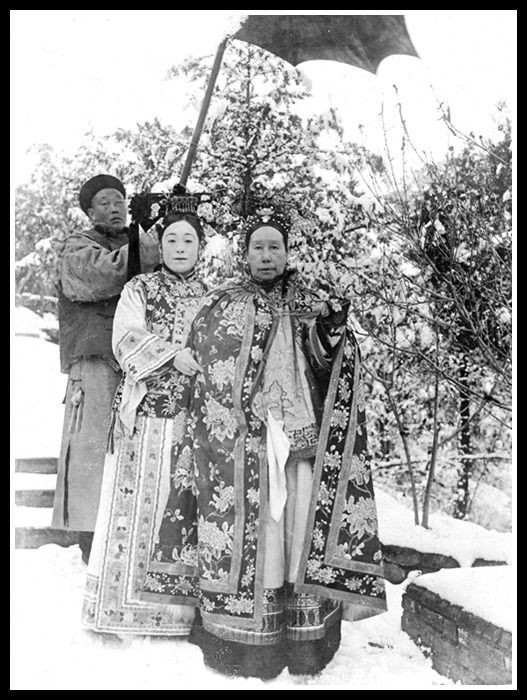
Empress Dowager Cixi with her lady-in-waiting, Yü Der Ling (also known as Princess Der Ling) and a enuch during a snowy day
#empress dowager cixi#Der Ling White#chinese imperial family#qing dynasty#chinese history#nobility#house of aisin-gioro
17 notes
·
View notes
Photo

Empress Dowager Cixi (29 November 1835 – 15 November 1908), of the Manchu Yehe Nara clan, was a Chinese noblewoman, concubine and later regent who effectively controlled the Chinese government in the late Qing dynasty for 47 years, from 1861 until her death in 1908. Selected as a concubine of the Xianfeng Emperor in her adolescence, she gave birth to a son, Zaichun, in 1856. After the Xianfeng Emperor's death in 1861, the young boy became the Tongzhi Emperor, and she assumed the role of co-empress dowager, alongside the Emperor's widow, Empress Dowager Ci'an. Cixi ousted a group of regents appointed by the late emperor and assumed the regency along with Ci'an, who later died. Cixi then consolidated control over the dynasty when she installed her nephew as the Guangxu Emperor at the death of her son, the Tongzhi Emperor, in 1875. This was contrary to the traditional rules of succession of the Qing dynasty that had ruled China since 1644.
13 notes
·
View notes
Text
Both Cixi and Empress Alexandra of Russia have quite a few similarities:
Both were reactionary rulers who ruled, not reigned. Both refused to accept the current of history in their own societies and this blew up in their faces and those of China and Russia and ultimately the world. All the efforts to absolve Cixi run aground on the reality that she was a ruler with actual power who deliberately wielded that power in a disastrous fashion. It will never be convincing in an autocracy that the autocrat is blameless in the autocracy failing.
Cixi was up against nearly impossible challenges, like the last Romanovs. She and they still failed and the consequences of the failures echoed around the world.
#lightdancer comments on history#women's history month#asia and women's history#china and women's history#dowager empress cixi
7 notes
·
View notes
Text
I realised that the 10k words that I currently have is likely a much smaller fraction of the hypothetical completed work than I thought it was going to be and I told myself I shouldn't take anything out because it all seems to be fitting together fairly neatly BUT I am def starting to have my doubts about the value of "the scene where the two male characters discuss whether the female character (who is not in this scene) should be breastfeeding the baby that she just had with one of those men (but she's been passing it off as the other one's)" because WTF that sounds AWFUL and I think I only put it in there because I was all YAY I'M JUST GONNA WRITE ABOUT MEDIEVAL QUEENS (KIND OF!!!) and there was that whole Thing in monarchies where you have to get a wetnurse in because breastfeeding reduces fertility and your shitty husband needs AT LEAST another couple of boys what with infant mortality being what it was in them days. And for some reason (probably sleep-deprivation TBQH) I at some point thought that it wouid be a good thing to put into an MCU fic???
#wip tag#now that i type this out it has become both worse AND funnier to me so who knows what i will decide to do with it in the end#i also remembered that this entire adventure into whatever the heck i am actually making now is because i realised that two famous queens#i forget which ones OBVIOUSLY#were famous for pulling off the same feat#which is 1) pop out at least one boy#2) outlive your shitty husband#and 3) your child-king son is now basically your talking puppet and you run a country now you go girl yas queen slay etc etc etc#i think one might have been catherine di medici? and... possibly margaret beaufort? (i know henry wasn't a kid at the time but yk)#POSSIBLY one was Empress Cixi? aka the one non-European more-or-less-queen that I know anything about#but anyway yes the trick here is to have a royal son and then refuse to ever die#elizabeth woodville has to be an Honourary Mention because she COULD have done it as well#had her brother-in-law not realised she was about to do that and kidnapped usurped and then probably-murdered the boy in question#Henry VIII's famous gang of queens all failed to meet at least one of the requirements :(#anyway hello some years ago i started reading books about famous dead queens and now what have i become???#BTW monarchies are a terrible idea#just scrolled up to see wtf i am typing this stuff under oh yeah it's the post about the lactation debate scene oh noooo#gonna... gonna hit post now while i still can#the Sylki AU that got longer and wronger
15 notes
·
View notes
Text
Empress Dowager Cixi


12 notes
·
View notes
Text

Hey Guangxu why are you calling the Empress Dowager "Daddy"?
#towards the republic#chinese history#Guangxu Emperor#Empress Dowager Cixi#im sure that's the correct protocol its just a bit odd
6 notes
·
View notes
Photo
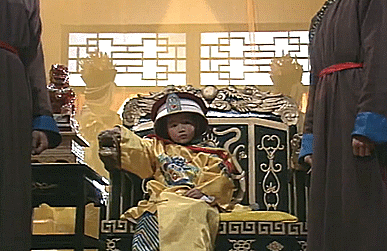
50 Years, 50 Gifs
The Rise and Fall of the Qing Dynasty: Bloodshed Over the Forbidden City | 滿清十三皇朝 之 血染紫禁城 [ATV, 1990]
19/50
#michelle yim#米雪#empress dowager cixi#慈禧太后#Bloodshed Over the Forbidden City#hkdrama#hkdramagif#sylvia lai#森森#empress dowager ci'an#慈安太后#guangxu emperor#光绪帝#滿清十三皇朝 之 血染紫禁城#血染紫禁城#I like that they show Ci'an being wary of her vs how they appeared equal at Tongzhi's accession
12 notes
·
View notes
Photo

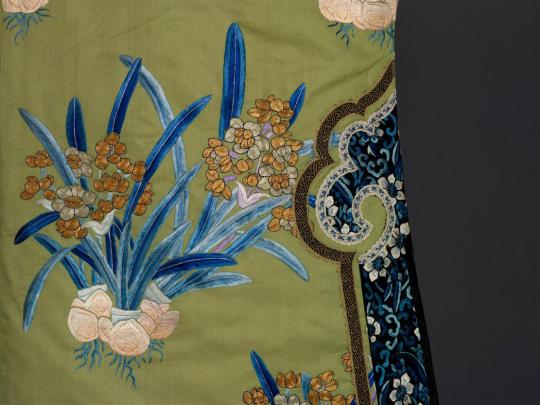
Spring Robe, said to have belonged to Empress Dowager Cixi
1880-1905 (Qing Dynasty)
China
Royal Ontario Museum (Object number: 919.6.121)
#robe#non western fashion#1880s#1890s#1900s#qing dynasty#fashion history#historical fashion#cixi#empress cixi#19th century#green#blue#silk#china#chinese fashion#royal ontario museum#if i had a nickel for every item said to be owned by cixi#i'd have a lot of nickles tbh
528 notes
·
View notes
Text

The photographs of the Empress Dowager Cixi taken by Xunling are more Western than Eastern in style. Freer and Sackler Galleries, SI
0 notes
Text
Production Notes — Background
Bernardo Bertolucci's THE LAST EMPEROR was filmed entirely on location in China in 1986. Bertolucci and his producer Jeremy Thomas were the first Western filmmakers to be allowed to make a film about modern China and it took two years of complex negotiations to obtain the unprecedented permissions which also allowed them to film in hitherto forbidden locations.
On August 4th, 1986, in the Chinese capital Beijing (formerly Peking), the cameras finally rolled on one of the biggest and most ambitious films ever made.
The independently financed production is an epic tale which embraces the entire sweep of twentieth century China and the years of the most tumultuous changes the country has ever seen.
Yet despite its cast of thousands, Itys palatial and exotic locations, its sumptuous design film is also the intimate story of an extraordinary and unique man and his journey of self- discovery, a man who started life as the ruler of half the world's population and ended it as a humble gardener in Peking.
Bertolucci was fascinated by the life of the ex-Emperor and the question which became the heart of his film -can a man change? Did Pu Yi change and if so, how much during the years of his re-education in prison?
"Pu Yi's story can be described in many ways," says Bertolucci. "As a journey from darkness to light or as the Chinese say, changes from a dragon to a normal person, from an Emperor to citizen.
Pu Yi, the last emperor, came to the Imperial throne in 1908 at the age of 3, the Son of Heaven, Lord of Ten Thousand Years, was forced to abdicate at the age of six, was thrown out of the Forbidden City in 1924 with his two wives and drawn into the life of a Western-style playboy. In 1931, he succumbed to the seductive Japanese invitation to mount the throne again and became a puppet emperor in the Japanese controlled state of Manchukuo. Captured by the Russians in 1945, he was returned to China in 1950, expecting to be executed by the communists. Instead, he spent ten years in gaol in the hands of an enlightened prison governor and emerged a changed man. He returned to Peking at the start of the Cultural Revolution and became a gardener, more free than he had ever been before. He died in 1967.
John Lone stars as Pu Yi, Joan Chen as the Empress Wan Jung, and Peter O'Toole as Reginald Johnston, the emperor's tutor. The Director of Photography is two-time Oscar winner, Vittorio Storaro, Production Designer is Ferdinando Scarfiotti and Costume Designer is James Acheson. The screenplay is written by Mark Peploe with Bernardo Bertolucci. Jeremy Thomas is the producer.
In March 1984, Bernardo Bertolucci and Mark Peploe first visited China with proposals for two films. One of them was "From Emperor to Citizen," the autobiography of Pu-Yi which Bertolucci has recently read. The Chinese response was warm and immediate - they welcomed the idea of a Western director filming the story of the last emperor of China.
The filmmakers were pleasantly surprised by the lack of restraints imposed by the Chinese. Although negotiations were long and complex, due to complications inherent in the meeting of two different cultures, the Chinese gave THE LAST EMPEROR unlimited cooperation through the Cinema Film Co-Production Corporation in exchange for the Chinese distribution rights to the film. They approved the script, commenting only on factual inaccuracies and demanding no alterations.
Pu-Yi’s eldest surviving brother, Pu Chieh and Li Wenda who helped Pu-Yi to write his autobiography, acted as official advisers on the film. In unofficial capacities, there were also many other survivors of the period who were tracked down by the production, including Jin Yuan, the prison governor, and Big Li, the manservant.
The logistics of the production were staggering. THE LAST EMPEROR brought together people from six nations. Actors came from America, Great Britain, China, Hong Kong, and Japan to play the 60 main characters in the story, 100 technicians from Italy, 20 from Britain and 150 Chinese worked for 6 months of shooting to put the film on the screen and 19,000 extras, including soldiers of the People's Liberation Army, appear altogether in the immense crowd scenes.
Costume designer lames Acheson gathered 9,000 costumers from all over the world. Imperial Aunt so the wonders and peasants, Japanese army uniforms, Kuomintang uniforms and western dresses fashionable in the Twenties and Thirties were among the many that were bought or made in China and cities as far apart as London, Hong Kong, Tokyo, Rome, Spoleto in Italy, and Brighton in England.
The inner man had to be catered for as well. An Italian chef wa brought from Rome and with him came 220 kilos of Italian mineral water, 200 kilos of Italian coffee, 500 litres of olive oil and 2,000 kilos of pasta.
Twenty vintage cars, including Delages, Ford Model T's, Fiats, Lancias, Buicks, Hispano Suizas and Mercedes limousines, plus motorcycles with side cars and a child's bicycle for the young Emperor, were shipped by sea to China to appear in the film.
The production spent four months in China on location in Beijing, Dalian and Changchun in Manchuria with interiors completed over two months at Cinecittà Studios in Rome.
Many weeks were devoted to filming inside the Forbidden City, home for so many years to the ruling dynasties of China. Bertolucci describes it as "the set Hollywood dare not build, the Disneyland of China". The Forbidden City is one of the most impressive sights anywhere in the word. It stands in the heart of Peking, its 250 acres entirely enclosed by high red walls, some of them 50-feet thick. It has 9,999 rooms (the Chinese believed that only heaven had 10,000 rooms) built around a bewildering jigsaw of courtyards, alleys, and gardens. Here Pu-Yi spent 16 years of his life, unable to go outside, surrounded by thousands of eunuchs and the ladies of the court. Forbidden no longer, it is now one of China's greatest tourist attractions swallowing up over 50,000 visitors a day. During filming, whole palaces and courtyards were closed off for the production as curious tourists gathered in their thousands to watch.
In Beijing, the production was based at the Beijing Film Studios where 1,200 Chinese normally eat, sleep and work according to the Chinese system of belonging to a work unit that also houses and feeds you. The studios normally produce 15-18 feature movies while LAST EMPEROR was shooting, most other activity stopped as all available studio space was given over to the mammoth production.
Here production designer Ferdinando Scafiotti designed and built a number of sets including the Empress Dowager’s bedchamber and the emperor’s living quarters.
Exterior sets included a thronging ancient Peking Street scene, the Emperor's father's house and the Fushun prison yard. So sturdy was the house and its courtyard, built by the Chinese in brick and stone, that after filming it was immediately turned into living quarters for the studio workers.
China is a country in the throes of remarkable changes that are transforming it almost in front of the visitor's eyes.
"My film resembles China because its story is also about change,” says Bertolucci.
"All my previous films were journeys from light towards darkness. THE LAST EMPEROR goes the opposite way, from darkness to light.”
The Director: Bernardo Bertolucci
BERNARDO BERTOLUCCI was born in Parma, Italy in 1941. Through his father Attilio Bertolucci, a well-known pol, he met the director Pier Paolo Pasolini and in 1961 abandoned his course in modern literature to work as an assistant director on Pasolini's first film "Accatone."
The following year, Bertolucci published "In Cerca del Mistero,” a collection of poems which was awarded Italy's prestigious Viareggio Opera Prima Prize and wrote the screenplay of the film, which was to be his first as a director, “Commare Secca" (The Grim Reaper). The film was well received at the Venice Film Festival and Bertolucci went on to make his second feature, “Before the Revolution.”
Bertolucci then had to endure the frustration of not being able to raise the finance lo make a Feature film, making a series of documentaries and writing screenplays culminating in directing.
"The Conformist", his brilliant adaptation of the Alberto Moravia novel, which firmly established his reputation as a major figure in contemporary cinema.
1973 was the year of "Last Tango in Paris", which inspired Pauline Kael of the New Yorker 10 liken the first screening of the film to the riotous first night of the 1913 performance of Stravinsky's "Rite of Spring" and to call it "the most powerfully erotic movie ever made. Bertolucci has altered the facc of an art form". His next production, "1900", made in 1976, was the equally powerful and again controversial study of the dissolution of northern Italy's traditional agricultural society.
In 1975 Bertolucci founded Fiction Films, the company through which he produced his subsequent films, "La Luna” in 1979 and "Tragedy of a Ridiculous Man," in 1981.
The Producer: Jeremy Thomas
JEREMY THOMAS, who was born in Ealing, rather a pithias rare fed some in R, ins it atis include the "Doctor" movies and his uncle, Gerald, directed the highly successful "Carry On" series of films. Cinema has been part of Thomas' life since he was a child and his vacations were spent around the locations or in the studio where his father happened to be working at the time.
Thomas' only ambition was to work in movies and from the age of ten he began to make his own films with friends. Originally, he wanted to be a director but says, "Somehow I ended up being a producer. I would still like to direct but now the reality of what it takes to make a really good film looks more difficult to me.
From school, Thomas went to work in a film processing laboratory and a year later moved into the cutting rooms as an assistant, before graduating to editor, After working with the director Phillipe Mora, editing “Brother, Can You Spare A Dime,” Thomas went with him to Australia in 1974 and there he produced his first film, "Mad Dog Morgan* , which Mora directed He spent two years in Australia and then returned to England where he put together *The Shout" with a screenplay by Michael Austin from a story by Robert Graves, directed by Jerzy Skolimovsky, which won the Grand Prix de lury at the Cannes Film Festival. He then found himself on "the producing circuit", gradually becoming responsible for ambitious projects.
Thomas' films are all extremely individual and owe nothing to box-office patterns of fashionable trends. They range from "The Great Rock’n'Roll Swindle" directed by Julien Temple to “Bad Timing” directed by Nicolas Roeg; “Merry Christmas, Mr. Lawrence,” directed by Nagisa Oshima; "The Hit" directed by Stephen Frears and "Eureka” and "Insignificance", directed by Nicolas Roeg. Britain's National Film Theatre presented a season of his films and in 1986 he won the prestigious Vittorio de Sicca Prize. In 1987 he was honored by an invitation to be a member of the jury of the Cannes Film Festival.
In 1985 Thomas set up his own film distribution company, Recorded Releasing, which releases some eight films a year. He also founded Recorded Cinemas and through this company owns two cinemas, The Gate in Notting Hill, London, and the Cameo in Edinburgh. He has also set up his own video production company, Vivid.
The Story
Peking, 1908. A three-year old boy is removed from his home and his mother and is carried through the night to the Forbidden City, the heart of ancient China. His name is Pu-Yi.
Days later he is placed on the Dragon Throne and becomes “The Lord of Ten Thousand Years,” ”The Son of Heaven,” ruler over almost half of the world’s population. Py-Yi is the Emperor of China and the loneliest boy on Earth. But three years later, in 1912, China becomes a republic, the Qing dynasty is forced to abdicate, and more than 3,00 years of imperial rule come to an end.
Almost the only person who does not understand this is the boy emperor. While the convulsive tides of modern history transform the world outside, the strange mediaeval life in the Forbidden City hardly changes.
As Pu-Yi grows surrounded by high consorts, courtiers and oven 1500 eunuchs, he is still treated as a god, free to do almost anything he wants, except to live in the present or to set foot outside the palace. Unwittingly, he has been cast as the leading actor in an elaborate play, performed on the largest stage on earth, I which the other actors are conspiring to keep reality for him. Reality if the Chinese people, they are the audience and they have abandoned the theatre long ago.
Pu Yi is 18, married with two wives, when the charade collapses and expels the ex-emperor from the Forbidden City. In 1924 a republican warlord captures Peking and expels the ex-emperor from the Forbidden City. Aided by his friend and tutor, the Scottish Mandarin Sir Reginald Johnson, Pu Yi flees to Tientsin.
For a few years he enjoys the life of a western playboy before becoming increasingly dissatisfied. Now he is an actor without a role, as well as without an audience.
In 1931, Japan invades Manchuria and Pu Yi makes the great choice, and the great mistake of his life. He accepts the Japanese invitation to return to the land of his ancestors and becomes the emperor of the new state of Manchucko. It is the beginning of a nightmare for himself, for China and for the rest of the world which is soon at war.
The last emperor of China is one of the most extraordinary anti-heroes of modern times, an oriental Peter Pan floating like a cork on the stream of history.
His life embraces the whole century, from the end of the Qing dynasty to the first republic of Sun Yat Sen; from the warlords of the twenties to the Kuomintang of Chiang Kai-Shek; from the Japanese invasion to the State of Manchukuo, where Pu Yi becomes a puppet emperor controlled by the Japanese; from the Second World War to the foundation of the People's Republic; from a decade of Mao's re-education programs to the beginning of the Cultural Revolution. In 1959, after ten years in a communist jail, Pu-Yi was pardoned.
In 1960 he returned to Peking and became and gardener in the Botanical Gardens, freer in his terms than he had ever been before. For the first time in his life, he could bicycle in the streets, eat in a restaurant or ride on a public bus.
Traditionally, a Chinese emperor is "the first to sow and the first to reap." His purpose is to set an example. Perhaps Pu-Vi achieved this at the end of his life when he became a citizen of the People's Republic of China. It was the part he played best.
Pu Yi died in 1967.
#Pu-Yi#溥儀#Puyi#Aisin-Gioro Puyi#Yaozhi#曜之#The Last Emperor#David Byrne#Bernardo Bertolucci#Empress Dowager Cixi#Spotify
0 notes
Text

Hubert Vos - Portrait of the Dowager Empress Cixi (1906)
385 notes
·
View notes
Text


Historically inspired Ningguang
I based this semi-historical fashion for Ningguang on images of Empress Cixi. I know it’s usual to not draw Ningguang in a qipao but I wanted to base her look on a real woman in history in a position of power if you will. Ningguang is a powerful leader and important player in the commercial success of Liyue. Also the very long nail/finger guards are very iconic for both.
I am the artist! Do not post without permission & credit! Thank you! Come visit me over on: instagram.com/ellenartistic or tiktok: @ellenartistic
#ninngguang#lady ningguang#genshin impact#ellenart#lnart#character design#costume design#digital illustration#historically inspired#video games I can't stop playing#historical inaccuracies#redesigning heroines
269 notes
·
View notes
